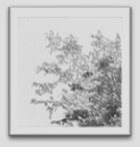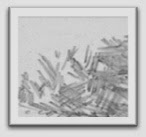The anticipation of making that first mark on a blank sheet of paper for me is exciting. Each mark builds upon the last one and soon the image begins to evolve and appear on the paper.
As with any art medium, knowing what your graphite pencil can do is important. The simple pencil can make a variety of different textures and effects just with a little practice.
Smooth Gradient
Creating a smooth tone from dark to light. Practice creating a smooth gradient by using heavier to lighter pencil pressure in one pass. Notice the difference between using a harder lead versus a softer lead. The softer lead creates a darker more grainy tone.
Gray Scales
Use the full-range of pencils available (6B – 2H) to match the value. You can vary your pencil pressure and/or use multiple pencil grades to create the value. Be sure to note which pencil(s) were used for future reference.
Pencil Marks
Varying the pencil mark can create a multitude of different effects. Combining different pencil marks in one sketch, will create variety, and more realistic images.
- Circular – Draw small circular strokes using a light pressure. Use multiple layers to create a smooth, even and diffuse tone. Particularly effective for skin textures.

- Cross hatching – Draw close parallel lines. Change the rotation of the lines with each layer. This works well for large areas and creates a smooth, ‘linen’ effect.

- Scribbling – Using the over-hand pencil grip, create small random scribbles. This is very effective in creating foliage on trees.
- Random marks – This is similar to scribbling, except the marks are random. Varying the pressure of the pencil can build up areas quickly. This is a great technique when exploring subject matter and quick sketching.

 Stippling – Short – Medium – Long – Varying the length of the pencil stroke creates a variety of textures.
Stippling – Short – Medium – Long – Varying the length of the pencil stroke creates a variety of textures.
Erasing
Erasing can be as important of a tool as the pencil. By removing or lifting off graphite from your sketch, you not only remove mistakes, but can also create different effects and subtle values.
- Kneadable eraser – This eraser can be molded into shapes and lift graphite off the paper. To clean the eraser, just knead until the graphite is absorbed into the eraser.
|
- White Mars eraser – I use this eraser sparingly. Most common use is to erase using a ruler to create sharp edges. I keep a sharp edge on the eraser by slicing at an angle with a knife.
Blending
Blending pushes the graphite into the fibers of the paper and removes the “graininess” of graphite layers. This creates a very smooth, soft affect that is commonly used to create clouds in landscapes and smooth skin in portraits.
- Blending Stump – The stump made from pressed paper. This is used to blend small, detail areas on your sketch.
- Chamois – The chamois is a soft material that you wrap around your index finger, then using a circular motion, rub to blend the graphite layers to a smooth finish. This works well for larger areas such as creating skies in landscapes, or backgrounds.
Burnishing
Burnishing is a technique of applying a harder lead (3H) with the flat part of a chisel point over a detailed area.
- Blending versus Burnishing – The purpose of both blending and burnishing is to create a unified even value over a specific area but each will create much different results. Blending will blur or lessen your detailed areas, creating a softer look. Burnishing will retain all the under lying detail while creating a light unified tone. Burnishing will create a more realistic image than blending.
Q and A – Each article will be posted on Diane’s blog at www.dwrightart.blogspot.com. Comments or questions can be posted there and Diane will respond to any questions or discussions




